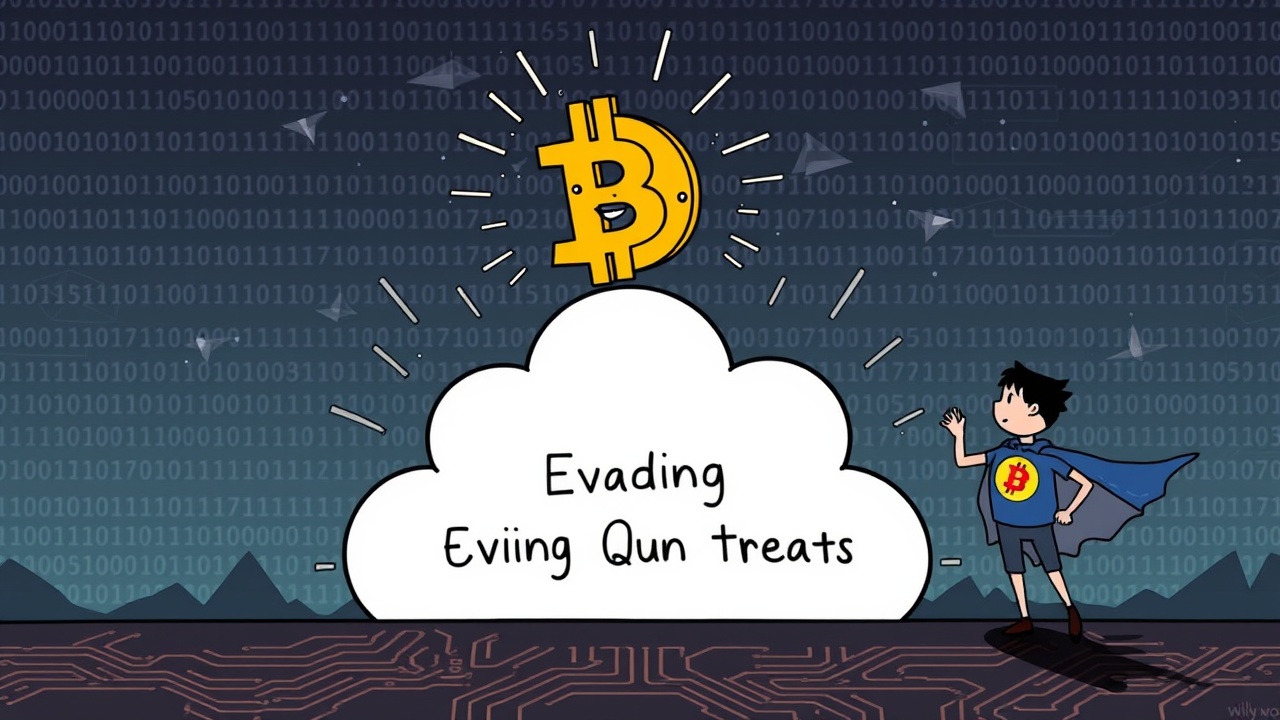Safeguarding Bitcoin Against Quantum Threats
In a recent discussion, renowned Bitcoin expert Willy Woo has proposed a strategy for safeguarding Bitcoin holdings against potential threats posed by quantum computing. Woo has advised investors to keep their Bitcoin stored in SegWit wallets for an extended period, suggesting a timeframe of approximately seven years, until a more robust solution can be developed to counteract the risks associated with quantum technology.
Concerns About Quantum Computing
The concern surrounding quantum computing has long been a debated topic within the cryptocurrency community. Theoretical advancements in quantum technology could enable computers to break current encryption protocols, potentially exposing sensitive information such as private keys, which would significantly compromise user assets.
Woo’s Recommendations
On Tuesday, Woo shared his thoughts via a post on social media platform X, introducing the notion of using a SegWit-compatible address as a temporary safe haven for Bitcoin. Implemented on August 23, 2017, SegWit, or Segregated Witness, is an upgrade that enhances how Bitcoin transactions are processed and can obscure public keys, providing an additional layer of security against quantum attacks.
“Historically, the focus was solely on securing your private key. However, with the looming presence of powerful quantum computers, it has become equally critical to protect your public key,” he explained.
Woo emphasized that, unlike contemporary Taproot addresses, which embed public keys within their structure, SegWit addresses keep public keys hidden until a transaction is executed. He noted that previous address formats shielded public keys behind a hash, complicating potential quantum decryption efforts.
Limitations of the Strategy
However, this strategy implies that users would need to refrain from transferring any Bitcoin out of their SegWit addresses until a quantum-resistant protocol is adopted. Woo did mention that Bitcoin held in exchange-traded funds, treasury allocations, or cold storage could also remain secure if custodians implement necessary precautions prior to the introduction of quantum-resistant measures. He further remarked that the prevailing consensus suggests that quantum computing will not pose a significant threat to Bitcoin until at least 2030, with quantum-resistant standards already being developed.
Criticism and Alternative Views
Contrarily, Charles Edwards, founder of the digital asset fund Capriole, criticized the reliance on SegWit as a protective measure against quantum threats. Edwards has consistently warned about the dangers posed by quantum mechanics to Bitcoin’s viability.
“Relying on SegWit is not a viable solution. Immediate upgrades to the Bitcoin network are crucial,” he stated, emphasizing that the industry must recognize the urgency of the situation to avoid potential network failures.
While some industry figures express heightened concerns regarding quantum risks, others assert that the fears may be exaggerated. Critics argue that quantum technology remains significantly behind in development, suggesting that more immediate targets like traditional banking systems might face vulnerabilities before Bitcoin does. In a previous statement, Bitcoin enthusiast Michael Saylor dismissed quantum fears as exaggerated marketing strategies aimed at promoting quantum-related cryptocurrencies, while Adrian Morris also voiced skepticism about the current state of quantum computing, citing significant unresolved issues in the field.
Conclusion
As the technology landscape continues to evolve, the debate on the implications of quantum computing for cryptocurrencies like Bitcoin persists, highlighting the critical need for ongoing dialogue and innovation to ensure security in the face of emerging challenges.




